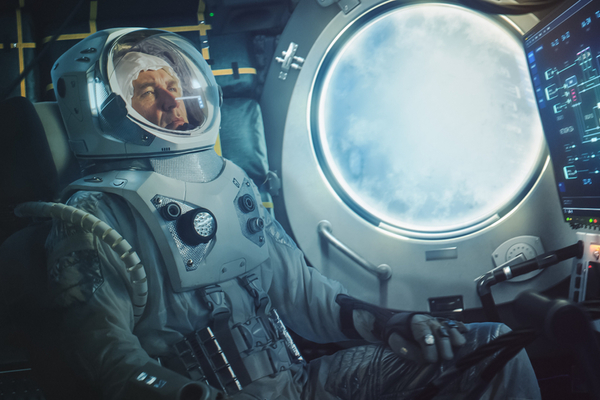The researchers proved that the CRISPR-Cas can be used to precisely and reliably identify viruses and bacteria infecting crew members during space missions.
By TPS
Israeli researchers at Tel Aviv University recently conducted a unique experiment in the International Space Station to test genetic diagnosis under microgravity conditions using the CRISPR system, a family of DNA sequences found in the genomes of prokaryotic organisms such as bacteria and archaea.
In the framework of the experiment, the researchers proved that the CRISPR-Cas can be used to precisely and reliably identify viruses and bacteria infecting crew members during space missions.
The study was led by Dr. Dudu Burstein from the Shmunis School of Biomedicine and Cancer Research, Tel Aviv University and Dr. Gur Pines from the Volcani Institute. The experiment was conducted in space by astronaut Eytan Stibbe as part of the “Rakia” mission launched to space in April, under the leadership of the Ramon Foundation and the Israel Space Agency.
CRISPR systems are the immune systems of bacteria from viruses. Bacteria use the CRISPR-Cas systems as a sort of molecular “search engine” to locate viral sequences and slice them in order to disable viruses.
The CRISPR system has recently been used to identify various organisms with extreme precision based on the recognition of specific DNA sequences. As part of their scientific vision, the researchers hypothesized that genetic diagnostics using this method, which requires minimal and easily operated equipment, could be suitable for long space missions, for example, at the International Space Station, or on future missions to explore the moon and Mars.
‘This is the First Step’
“Conditions in space are extremely problematic, and treatment methods are limited, so it is essential to identify pathogens in a rapid, reliable, and straightforward method,” Dr. Burstein explained. “Tests like PCR, which we are now all familiar with, require trained personnel and relatively complex equipment. In the International Space Station, we tested a CRISPR-based detection method.”
First, the DNA is amplified, and each targeted DNA molecule is repeatedly duplicated many times. Then, the CRISPR-Cas goes into action, and if it identifies the target DNA, it activates a fluorescent molecular marker. The fluorescence lets us know whether the bacteria or viruses of interest are indeed present in the sample. This whole process can be conducted in one tiny test tube, so it can suit well the astronauts’ needs.
The results of the experiments conducted by Stibbe at the International Space Station were highly successful, and the researchers proved that it is indeed possible to perform precise and sensitive CRISPR-based diagnosis even in an environment with virtually no gravity.
“This is the first step towards the simple and rapid diagnosis of diseases and pathogens even on space missions. There is still work to do on the next stages: simple extraction of DNA from samples, making the system more efficient, such that it will be able to test a variety of organisms in one test tube, and diagnosis of more complex samples,” said Burstein.
“It was inspiring to see our test kit in Eytan’s hands at the Space Station, and we’re even more excited by the possibility that such kits will help future astronauts on their extraterrestrial missions,” he concluded.
